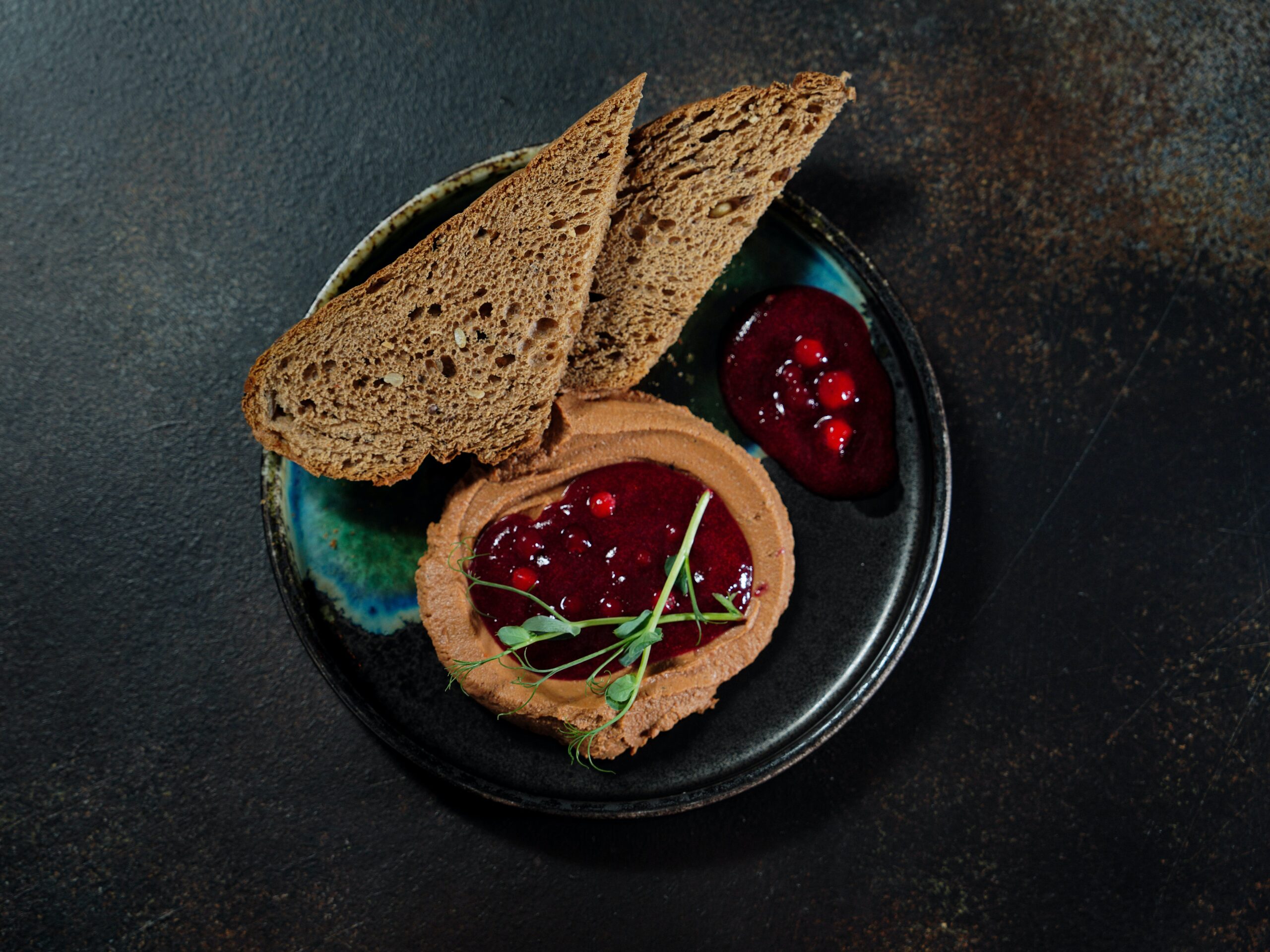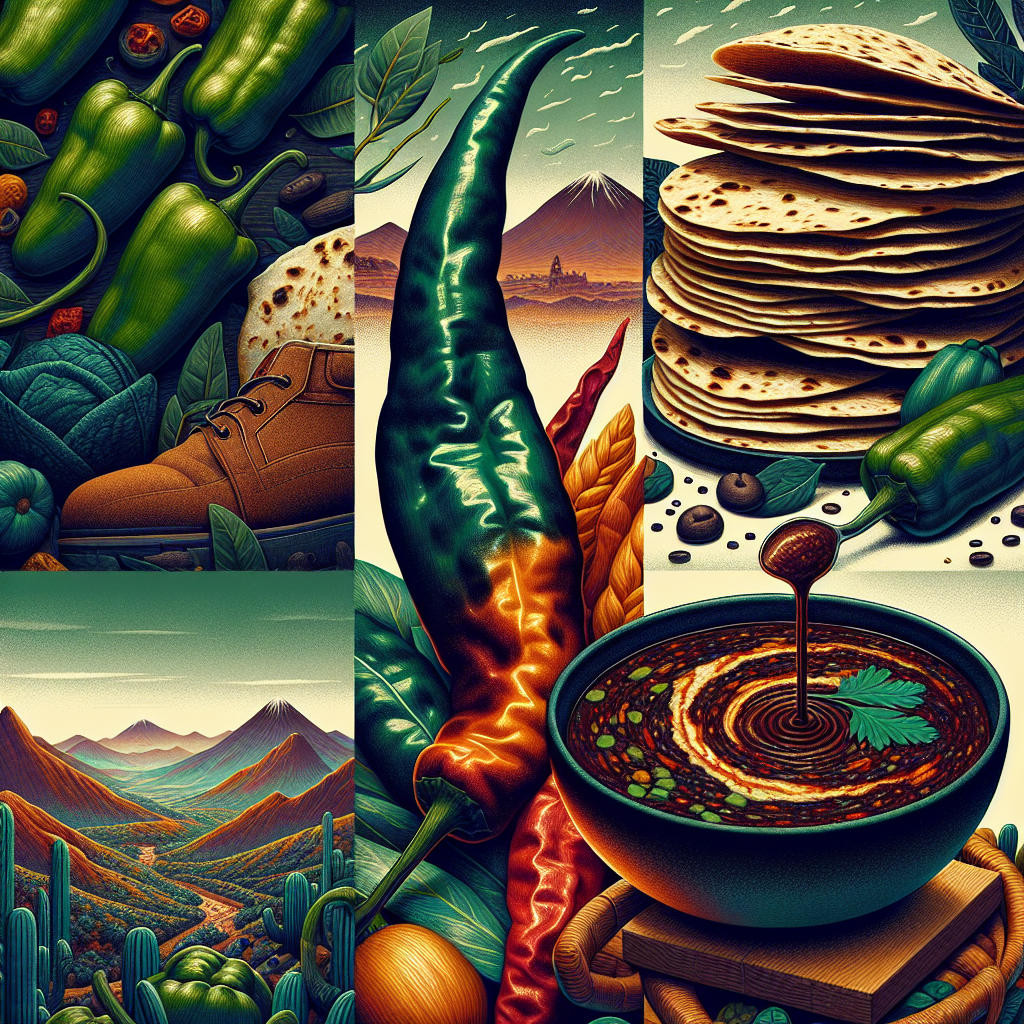Embark on a culinary journey to Mexico’s Central Highlands as you explore the rich and diverse food culture that has been shaped by centuries of tradition. Tastepan.com invites you to savor the flavors of this captivating region, where culinary histories intertwine with regional cuisines to create a tapestry of taste. Delve into the intricacies of Mexican cuisine as you immerse yourself in the heritage and stories behind each dish. From the vibrant colors of mole poblano to the comforting warmth of pozole, let the culinary heritage of Mexico’s Central Highlands transport you to a world of flavors.

Traditional Ingredients
The culinary heritage of Mexico’s Central Highlands is deeply rooted in traditional ingredients that play a quintessential role in the region’s cuisine. Maize and its varieties are the backbone of many traditional dishes, serving as the foundation for tortillas, tamales, and various types of bread. Chiles add a fiery kick to dishes, with different varieties used for their unique flavors and heat levels. Beans, particularly black beans and pinto beans, are a staple source of protein and are commonly enjoyed in soups, stews, and refried bean dishes.
Avocados, known for their creamy texture and rich flavor, are a versatile ingredient often used in guacamole, salads, and as a topping for many traditional dishes. Tomatillos, small green fruits with a tangy flavor, are a key ingredient for traditional salsas and sauces. Epazote, a herb with a distinct flavor reminiscent of citrus and anise, is commonly used to season beans and soups. Pulque, a traditional Mexican alcoholic beverage made from fermented maguey sap, has been enjoyed for centuries and holds cultural significance in the region.
Maguey, also known as the agave plant, is a versatile ingredient used for various purposes. Its leaves are used to make pulque and the well-known Mexican spirit, Mezcal. The sap is also extracted for making agave syrup and the stalks are used in traditional cooking techniques. Huitlacoche, a fungus that grows on corn, is considered a delicacy and is used in various traditional dishes, adding a unique earthy and savory flavor.
Iconic Dishes
The culinary heritage of Mexico’s Central Highlands gives rise to a multitude of iconic dishes that are beloved both locally and internationally. Mole Poblano, a rich and complex sauce made from a blend of chiles, nuts, seeds, spices, and chocolate, is often served over poultry or enchiladas. Chiles en Nogada, a dish that originated in Puebla, showcases the colors of the Mexican flag with its green poblano chiles stuffed with picadillo, covered in creamy walnut sauce, and garnished with pomegranate seeds.
Tacos al Pastor, a staple street food, features marinated and spit-roasted pork served in a tortilla with pineapple, onion, and cilantro. Enchiladas Mineras, hailing from the mining regions of Guanajuato and Zacatecas, are filled with meat, cheese, or vegetables, and bathed in a rich tomato and guajillo chili sauce. Cochinita Pibil, a dish prominent in the Yucatan region, is made by marinating and slow-cooking a whole suckling pig with achiote paste, citrus juice, and spices.
Pozole, a traditional hominy and meat stew, is often enjoyed during celebrations and gatherings. Tlacoyos, a type of stuffed tortilla, are typically filled with beans, cheese, or fava beans and topped with salsa and fresh cheese. Carnitas, which translates to “little meats,” are succulent, slow-cooked pork chunks that make for delicious tacos or burrito fillings. Chiles Rellenos are roasted and peeled poblano chiles stuffed with cheese, meat, or vegetables, dipped in egg batter, and fried until golden. Tamales, steamed corn dough filled with various ingredients and wrapped in a corn husk, are a beloved comfort food enjoyed year-round.

Food Markets and Street Food
Immersing yourself in the culinary heritage of Mexico’s Central Highlands wouldn’t be complete without indulging in the vibrant food markets and street food culture. Mercado de la Ciudadela, located in Mexico City, is known for its diverse selection of traditional crafts and street food vendors. This bustling market offers an array of antojitos mexicanos, which are quick snacks and street foods such as gorditas, tostadas, tlayudas, quesadillas, and elotes.
Mercado de San Juan, also in Mexico City, is a haven for food lovers and chefs alike. This market boasts an impressive assortment of fresh produce, artisanal products, and exotic meats. Mercado de Medellín, located in the Roma neighborhood, offers a wide range of traditional Mexican ingredients, from fresh fruits and vegetables to traditional spices and indigenous ingredients.
Mercado de Jamaica, one of the largest flower markets in Mexico City, is also known for its food stalls that serve up traditional Mexican dishes. Here, you can find refreshing beverages like agua de horchata and agua de jamaica, as well as the popular Mexican hot chocolate. Don’t forget to try the aromatic café de olla, a traditional Mexican spiced coffee.
Influence of Indigenous Cultures
The culinary heritage of Mexico’s Central Highlands is a reflection of the rich and diverse indigenous cultures that have shaped the region’s cuisine. The Aztec civilization, with their advanced agricultural techniques, introduced maize and various cooking methods that are still prevalent today. The Mayan culture contributed ingredients like achiote, habanero chiles, and the unique technique of cooking foods in underground pits known as barbacoa.
The Otomi, Totonac, Purepecha, Zapotec, Mixtec, Huastec, Tlaxcalan, and Chinantec cultures all left their mark on the culinary traditions of the Central Highlands. Each culture brought their unique flavors, ingredients, and techniques, resulting in a vibrant and diverse culinary landscape that still thrives today.

French Influence
The culinary heritage of Mexico’s Central Highlands also showcases the influence of French cuisine, thanks largely to the presence of Maximilian I of Mexico, a French prince who briefly ruled Mexico in the 19th century. This French influence can be seen in dishes such as escamoles, which are ant larvae often referred to as “Mexican caviar” due to their delicate flavor and texture.
Crepas de huitlacoche, made with the prized fungus that grows on corn, combine French-style crepes with a uniquely Mexican filling. Pan francés, or French bread, has become an integral part of Mexican cuisine, particularly for sandwiches and tortas. Pollo a la francesa, or French-style chicken, is a popular dish that typically involves chicken breasts cooked in a creamy white wine sauce.
Civet de lievre, a rabbit stew cooked in wine, is another example of the French influence on Mexican cuisine. Additionally, the fusion of French pastry techniques with Mexican ingredients has given rise to a wide array of Mexican French pastries, which are often enjoyed with a cup of traditional Mexican hot chocolate.
Legacy of Colonial Spain
Colonial Spain left an indelible mark on the culinary heritage of Mexico’s Central Highlands. Sor Juana Inés de la Cruz, a renowned poet, and nun, is considered a culinary icon during the colonial period. Her whimsical confections and candies, known as conventual candies, are still enjoyed today and showcase the fusion of Spanish and indigenous ingredients.
Chileatole, a traditional soup made from corn, chiles, and epazote, is a testament to the blending of indigenous and Spanish culinary traditions. Mole de Olla, a hearty beef stew with a rich broth and a medley of vegetables, reflects the Spanish influence on traditional Mexican stews. Churros, a beloved Spanish pastry, have become a popular street food snack in Mexico, often enjoyed with a cup of traditional Mexican hot chocolate.
Cochinita en achiote, a dish made with marinated and slow-roasted pork, combines the use of achiote paste, an ingredient introduced by the Spanish, with indigenous cooking techniques. Pan de elote, a sweet cornbread, and capirotada, a traditional Mexican bread pudding, are both dishes that showcase the Spanish influence on Mexican desserts.
Indigenous Culinary Techniques
The culinary heritage of Mexico’s Central Highlands encompasses various indigenous culinary techniques that have been passed down through generations. Nixtamalization, a process involving soaking and cooking maize in an alkaline solution, results in the production of hominy and masa, the key ingredients used in the preparation of tortillas, tamales, and other traditional dishes.
Comal cooking, which involves cooking foods on a flat griddle made of clay or metal, imparts a unique flavor and texture to dishes like tortillas and quesadillas. Molcajete grinding, using a stone mortar and pestle, is a traditional method of grinding spices, chiles, and herbs to create flavorful salsas and pastes.
Barbacoa pit cooking, a technique originating from the Mayan civilization, involves slow-cooking meats in underground pits, resulting in tender and flavorful dishes such as barbacoa de borrego (lamb barbacoa). Champurrado frothing, a technique used to create a frothy texture in champurrado, a traditional Mexican hot chocolate thickened with masa, is achieved by vigorously whisking the hot beverage.
Regional Culinary Variations
The culinary heritage of Mexico’s Central Highlands is diverse, with each region showcasing its own distinct flavors and culinary traditions. Guanajuato, a landlocked region, is known for its hearty and flavorful dishes such as enchiladas mineras and a variety of traditional stews.
Hidalgo, located in the Sierra Madre Oriental, boasts a rich tradition of barbacoa and pulque production. Michoacán, a region with a strong indigenous presence, showcases dishes like carnitas and uchepos, which are tamales made with fresh corn. Querétaro offers traditional dishes such as gorditas de nata and enchiladas queretanas, while Puebla is renowned for its iconic dishes like mole poblano and chiles en nogada.
Tlaxcala, the smallest state in Mexico, prides itself on traditional dishes like tlacoyos and cocoyocatos. Zacatecas, known for its mining heritage, offers delicious dishes such as asado de boda and gorditas de chicharrón. Mexico City, being the capital, serves as a melting pot of flavors and culinary traditions from various regions across Mexico.
Morelos, with its warm climate, is famous for its tropical fruits and refreshing beverages like tepache and agua fresca. The Estado de México, situated on the outskirts of Mexico City, is known for dishes like barbacoa, birria, and the iconic mixiotes.
Traditional Beverages
The culinary heritage of Mexico’s Central Highlands extends beyond food, encompassing a variety of traditional beverages that are deeply ingrained in the region’s culture. Tepache, a fermented pineapple drink, is a refreshing and slightly tangy beverage enjoyed throughout the region. Atole, a hot corn-based beverage thickened with masa, comes in various flavors such as vanilla, cinnamon, and chocolate.
Pulque, a traditional alcoholic beverage made from fermented maguey sap, has a slightly tangy and effervescent taste. Agua de horchata, a rice-based drink flavored with cinnamon and sugar, is a popular choice for quenching thirst on hot days. Torito, a sweet and creamy alcoholic beverage made from fermented rice, evaporated milk, and sugar, is a specialty of the state of Guanajuato.
Agua de jamaica, made from dried hibiscus flowers, has a vibrant ruby color and a refreshing tart flavor. Café de olla, a traditional Mexican spiced coffee sweetened with piloncillo (unrefined cane sugar), cinnamon, and orange peel, is a common morning pick-me-up. Mexican hot chocolate, made from tablets of sweetened and spiced chocolate melted into hot milk, is a beloved beverage enjoyed during festive occasions.
Mezcal, a distilled alcoholic beverage made from the hearts of agave plants, and tequila, a type of mezcal made specifically from blue agave, are two of Mexico’s most famous spirits that originated in the Central Highlands.
Celebrations and Festivals
The culinary heritage of Mexico’s Central Highlands is interwoven with vibrant celebrations and festivals that bring communities together to honor and enjoy traditional food and drink. The Day of the Dead, a widely celebrated holiday in Mexico, is a time for families to come together and honor their ancestors with altars adorned with traditional foods such as pan de muerto (bread of the dead) and sugar skulls.
The Guelaguetza, a festival celebrated in Oaxaca, showcases the rich cultural diversity of the state through traditional dances, music, and of course, food. The Viva Celaya Gastronomic Festival in Celaya highlights the region’s culinary delights, including traditional dishes and local products.
The Morelia International Festival, held in the UNESCO World Heritage-listed city of Morelia, celebrates the region’s cuisine, art, music, and traditional crafts. The Feria Nacional del Queso y el Vino, held in Tequisquiapan, Querétaro, is a gastronomic fair dedicated to showcasing the region’s cheese and wine production.
The Festival Internacional del Globo, held in León, Guanajuato, is a colorful celebration featuring hot air balloons and a variety of food vendors offering regional delicacies. The Carnaval de Puebla, known for its vibrant parades and festive atmosphere, is an occasion to indulge in traditional Pueblan cuisine.
The Feria Huamantla is a cultural and gastronomic fair held in Huamantla, Tlaxcala, showcasing the region’s traditional dishes and agricultural products. The Fiesta de la Vendimia, held in Ensenada, Baja California, celebrates the harvest of grapes and the region’s wine production. Lastly, the San Miguel de Allende Food Festival attracts food lovers from all over the world to enjoy culinary demonstrations, tastings, and events featuring local and international chefs.
In conclusion, the culinary heritage of Mexico’s Central Highlands is a treasure trove of flavors, traditions, and techniques that offer a glimpse into the diverse and vibrant food culture of the region. From traditional ingredients and iconic dishes to indigenous influences and regional variations, the Central Highlands of Mexico are a culinary paradise waiting to be explored. Whether it’s indulging in street food, exploring bustling food markets, or participating in festive celebrations, there are countless opportunities to immerse yourself in the rich heritage of this vibrant culinary landscape. So grab a tortilla, savor the flavors, and embrace the culinary journey through Mexico’s Central Highlands.

